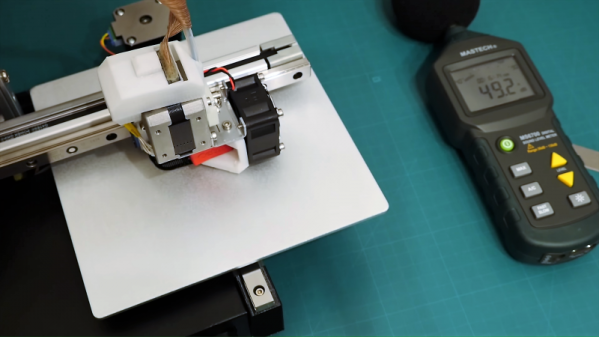The entry-level 3D-printer market is a rich one, with offerings from many vendors that are surprisingly good. But nothing is perfect, and to hit the $200 price point some compromises are inevitable. That doesn’t mean you have to live with those engineering choices, of course, which makes these cheap printers a great jumping off point for aftermarket mods.
[Linas K] took this route and in the process made his Cetus 3D-printer essentially silent. The first part of the video below reviews the shortcomings of the stock machine and the mechanical changes [Linas] made, including new brackets for the Z-axis slide, relocating the WiFi antenna to someplace sensible, and adding limit switches for each slide. Inside the case, the electronics get a complete reworking, with a custom PCB to house Trinamic stepper drivers for ultraquiet operation. The new board also supports the limit switches as well as thermostatic control of the extruder fan and pads for a platform heater. As a bonus, the new PCB is much smaller than the original, leaving room to tuck the power supply into the case, which is a nice touch. It wasn’t cheap, and it meant basically gutting the printer, but the results are impressively quiet.
We’re tempted to try these silencing mods on our own Cetus, if [Linas] ever publishes the BOM and PCB designs (hint, hint). And Cetus hacking is becoming quite a thing around here. From a trio of Cetus pro-tips to turning a Cetus into a PCB machine, the little printer has a lot to offer.
Continue reading “This Cetus Printer Is Rigged For Silent Running”













